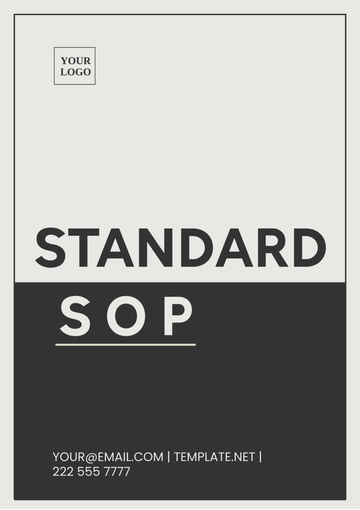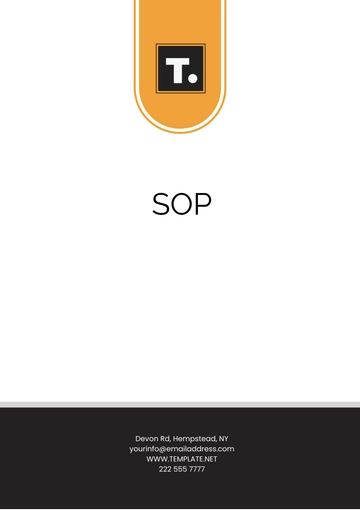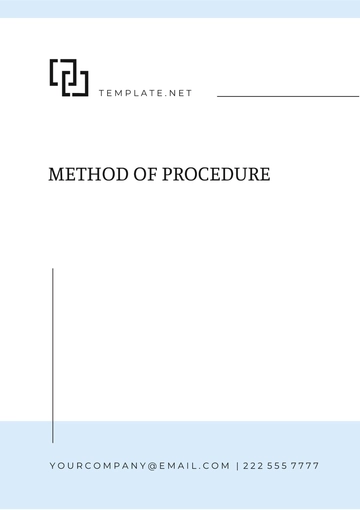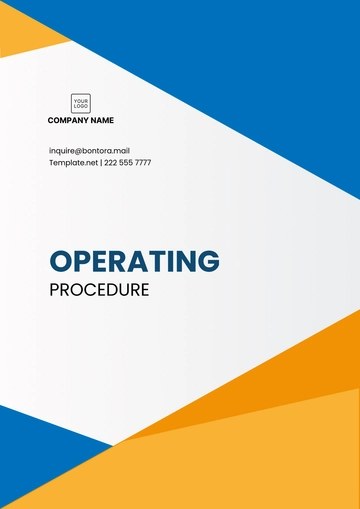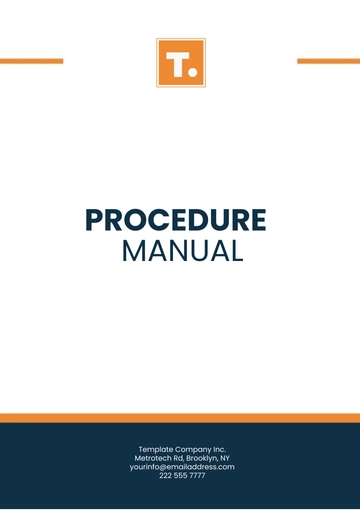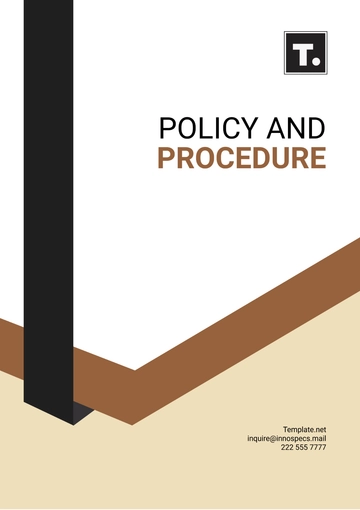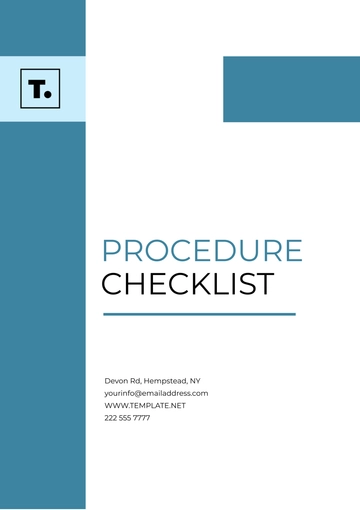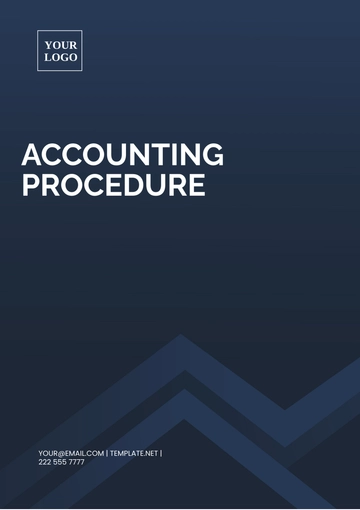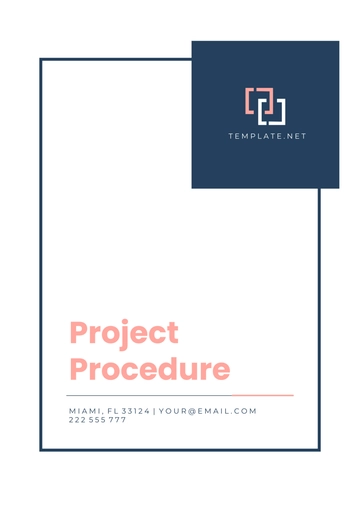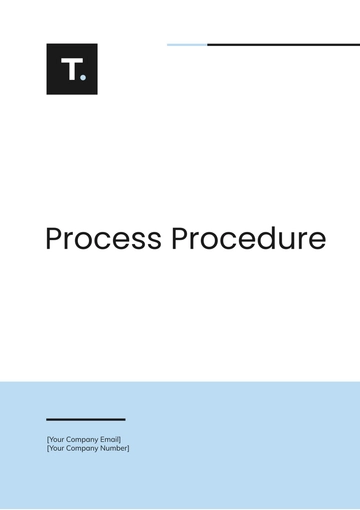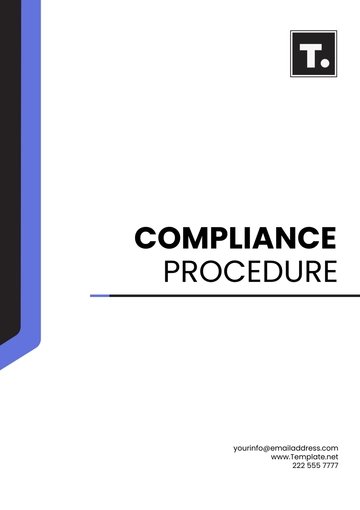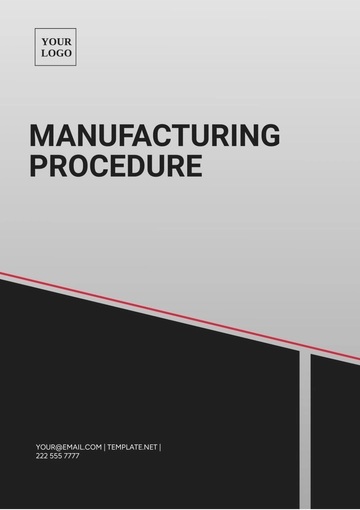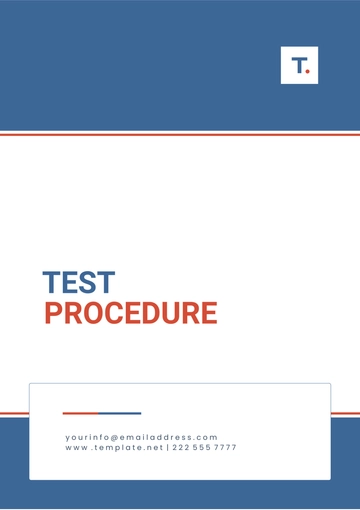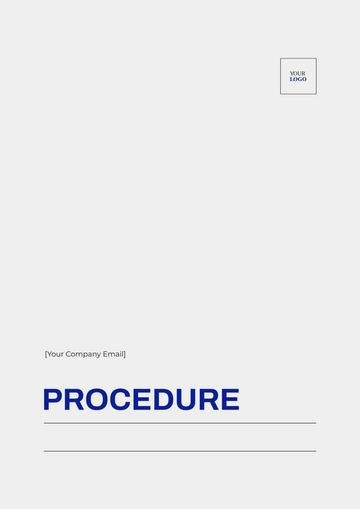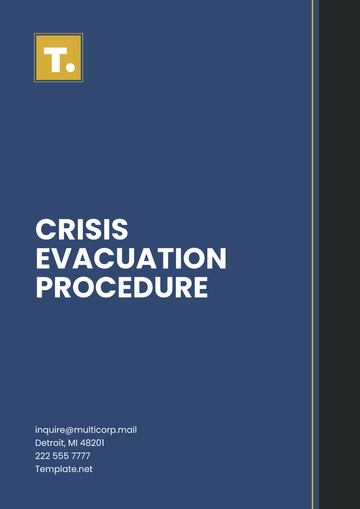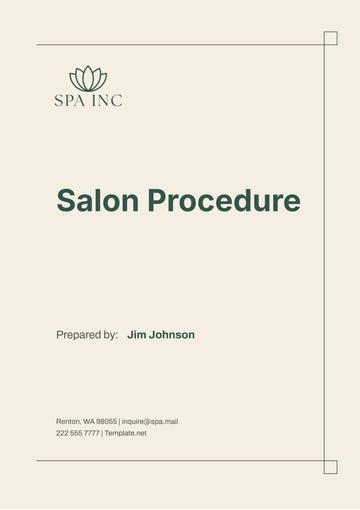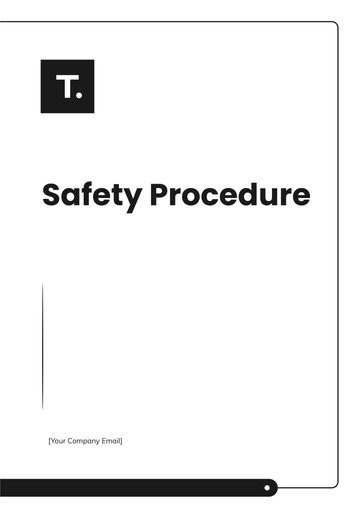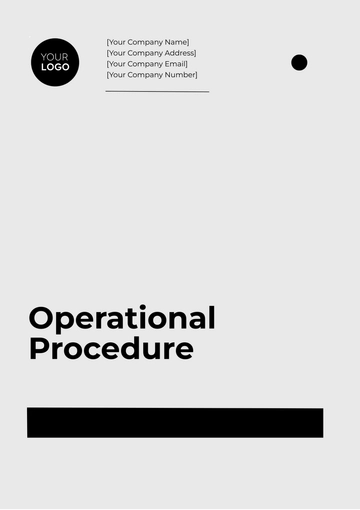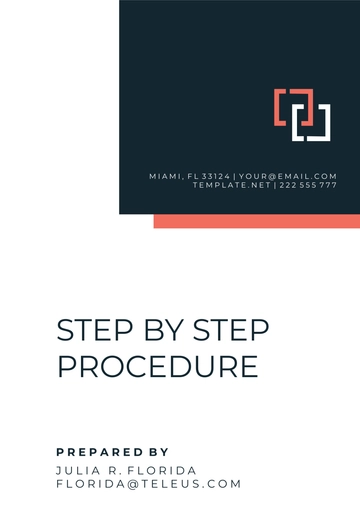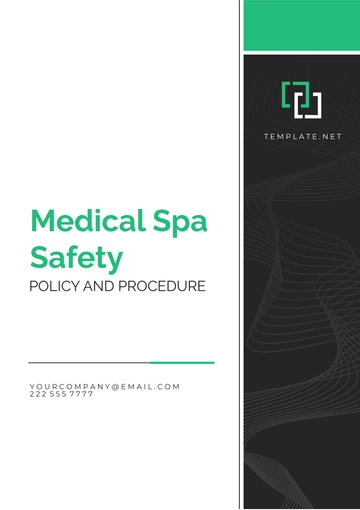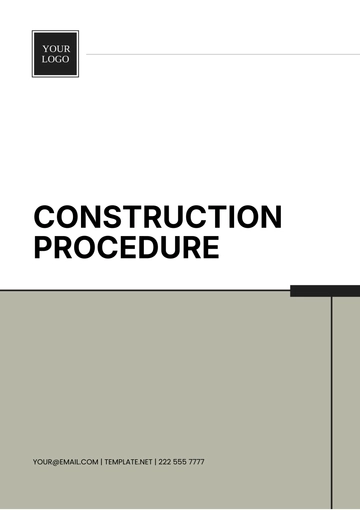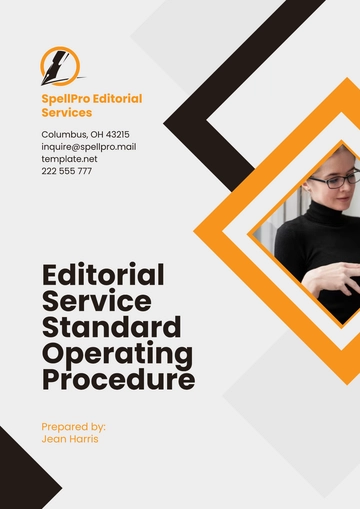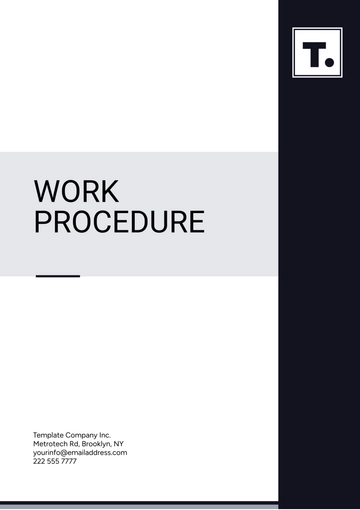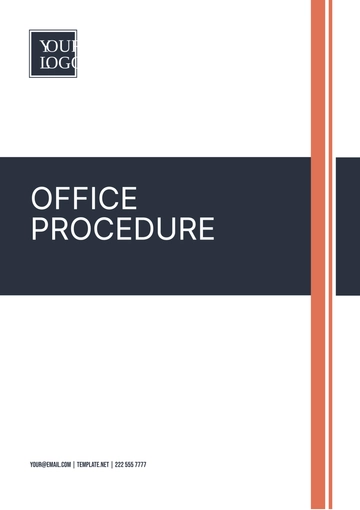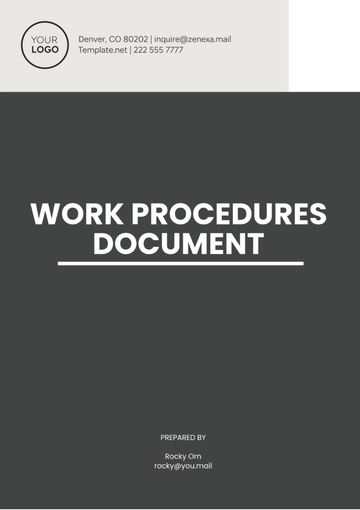Free Kitchen Cleaning Procedure
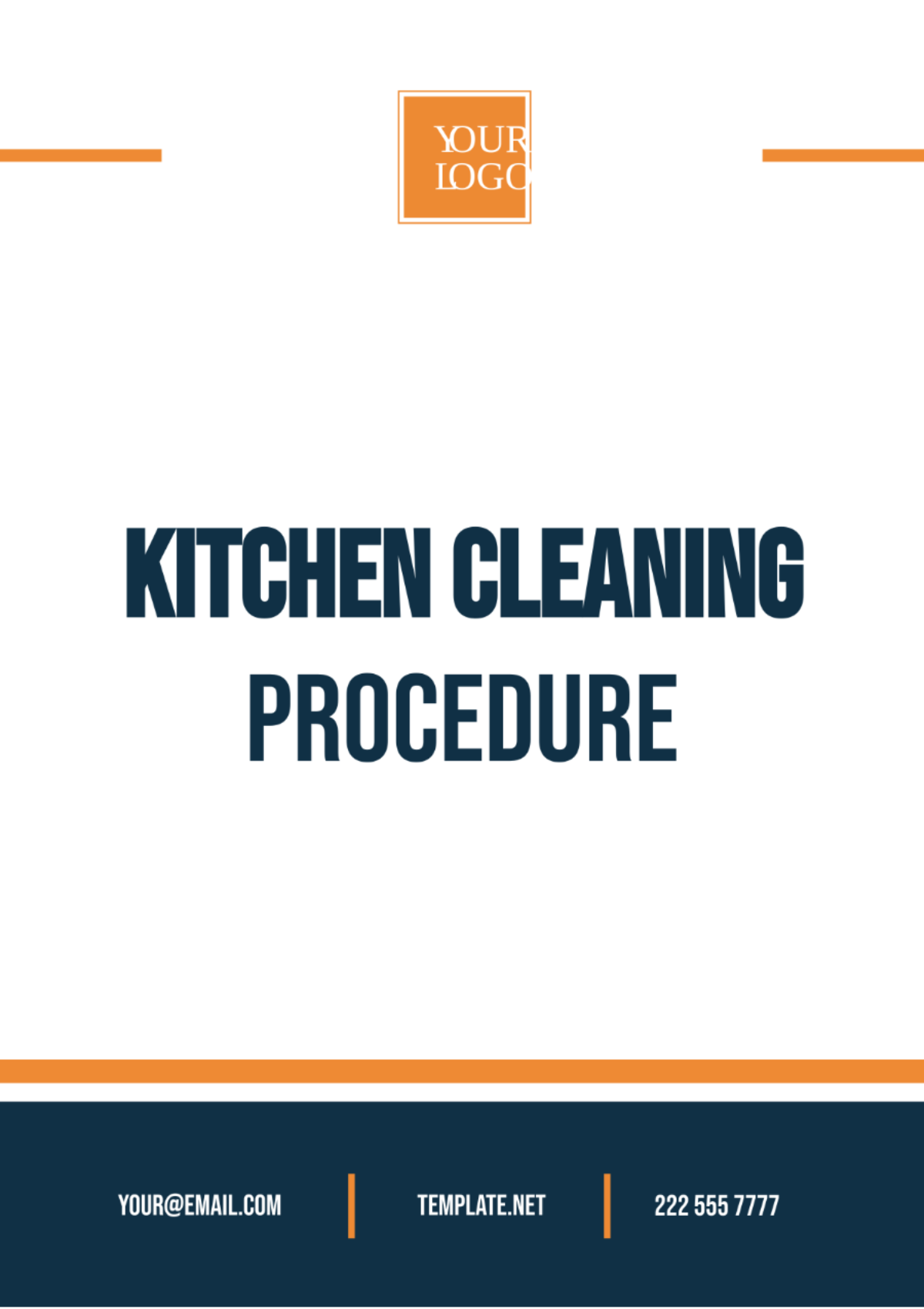
Prepared By: | [YOUR NAME] |
Company Name: | [YOUR COMPANY NAME] |
Department: | [YOUR DEPARTMENT] |
Company Email: | [YOUR COMPANY EMAIL] |
Company Number: | [YOUR COMPANY NUMBER] |
Date: | [DATE] |
I. Introduction
The Kitchen Cleaning Procedure outlines the steps for maintaining a clean and hygienic kitchen environment at [YOUR COMPANY NAME]. It ensures compliance with health and safety standards and promotes a sanitary workspace for food preparation.
II. Scope
This procedure applies to all kitchen areas within [YOUR COMPANY NAME], including food preparation areas, cooking equipment, storage spaces, and dining areas.
III. Purpose
The purpose of this procedure is to:
Ensure cleanliness and sanitation in the kitchen to prevent foodborne illnesses.
Extend the lifespan of kitchen equipment and facilities.
Comply with regulatory requirements and maintain a positive image of the establishment.
IV. Procedure
Step 1: Pre-Cleaning Preparation
Gather Supplies: Collect cleaning supplies including disinfectants, detergents, scrub brushes, and gloves.
Clear Work Areas: Remove any food items, dishes, or equipment from surfaces to be cleaned.
Step 2: Surface Cleaning
Sink and Countertops: Clean sinks and countertops with a suitable disinfectant, paying special attention to corners and crevices.
Appliances: Wipe down appliances such as stovetops, ovens, microwaves, and refrigerators with appropriate cleaning solutions.
Cabinets and Shelves: Clean cabinet exteriors and shelves, removing any spills or stains.
Step 3: Equipment Cleaning
Cooking Equipment: Clean cooking equipment, including grills, fryers, and ovens, following manufacturer's instructions.
Utensils and Tools: Wash utensils, cutting boards, and kitchen tools with hot, soapy water, and sanitize as necessary.
Small Appliances: Clean and sanitize small appliances such as toasters, blenders, and coffee makers.
Step 4: Floor and Waste Management
Floor Cleaning: Sweep and mop the kitchen floor using appropriate cleaning agents, paying attention to corners and under equipment.
Trash Disposal: Empty trash bins, clean them thoroughly, and replace liners as needed.
Step 5: Final Inspection
Visual Inspection: Conduct a visual inspection of all cleaned areas to ensure cleanliness and identify any missed spots.
Touch-Up Cleaning: Address any remaining dirt or stains, and re-clean if necessary.
V. Additional Reminders and Tips
Regular Schedule: Establish a regular cleaning schedule to maintain cleanliness consistently.
Team Collaboration: Encourage teamwork and assign specific cleaning tasks to each team member.
Safety First: Use appropriate personal protective equipment (PPE) when handling cleaning chemicals.
Record Keeping: Maintain records of cleaning activities and inspections for compliance purposes.
VI. Conclusion
This Kitchen Cleaning Procedure provides a structured and thorough approach to maintaining a clean and hygienic kitchen at [YOUR COMPANY NAME]. By adhering to these guidelines, our team ensures that our facilities meet the highest standards of cleanliness and safety, which is crucial for preventing contamination and ensuring the health of both employees and patrons.
Consistent Cleanliness: Adhering to a regular cleaning schedule helps maintain a consistently hygienic environment.
Attention to Detail: Focusing on thorough cleaning of all areas, including hard-to-reach spots, ensures comprehensive sanitation.
Team Effort: Collaboration among team members is vital for efficient and effective cleaning.
- 100% Customizable, free editor
- Access 1 Million+ Templates, photo’s & graphics
- Download or share as a template
- Click and replace photos, graphics, text, backgrounds
- Resize, crop, AI write & more
- Access advanced editor
Introducing the Kitchen Cleaning Procedure Template from Template.net! Simplify your kitchen hygiene regimen with this editable and customizable template, tailored to your needs. Effortlessly modify and fine-tune your cleaning routine with ease using our Ai Editor Tool. Streamline your kitchen maintenance today!
